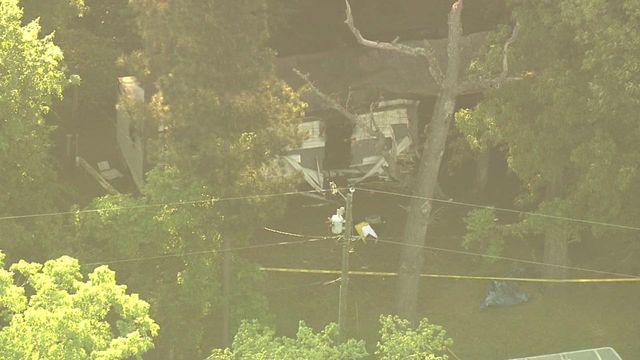The Met will return 16 ancient treasures to Cambodia and Thailand

NEW YORK — The Metropolitan Museum of Art said Friday that it had agreed to return 16 major Khmer era artworks to Cambodia and Thailand. The works are associated with Douglas A.J. Latchford, a Met donor and prolific dealer who was indicted as an illegal trafficker of ancient artifacts shortly before his death in 2020.
In recent years, the Met has come under pressure from the Cambodian government, which said dozens of items in the museum’s collections had been taken from the country illicitly from the 1970s onward during Cambodia’s decades of civil war and violent turmoil.
Among the artworks being handed back — 14 to Cambodia and two to Thailand — are important pieces that the museum has described as being among the finest surviving examples of sculptures from the Angkor period. Some of them are still on view at the Met, and will remain on view, the museum said, before their eventual return to the countries of origin. The museum said the wall text is being adjusted to note the objects’ repatriation.
Their return comes as the Met announced this year new efforts to review all of its collections and policies with a view toward returning objects it determines to have problematic histories. The museum has faced years of scrutiny over the extent to which its holdings include looted artifacts.
The Met had been cooperating in an investigation into Cambodia’s claims by the U.S. Attorney’s Office for the Southern District of New York and Homeland Security Investigations.
As part of the announcement, both Cambodia and the Met held out the possibility that more art could be returned after further review.
In a letter to the Cambodian government, Met Director Max Hollein said the Met was committed to reviewing its collection of Khmer artwork further and would welcome Cambodian experts to examine its collection and acquisition records.
“The Met has been diligently working with Cambodia and the U.S. Attorney’s Office for years to resolve questions regarding these works of art, and new information that arose from this process made it clear that we should initiate the return of this group of sculptures,” Hollein said in a statement. He said the Met was committed to pursuing partnerships and collaborations with Cambodia and Thailand “that will advance the world’s understanding and appreciation of Khmer art, and we look forward to embarking on this new chapter together.”
In a statement, the Cambodian Ministry of Culture and Fine Arts said: “We appreciate this first step in the right direction. We look forward to further returns and acknowledgments of the truth regarding our lost national treasures.”
Damian Williams, the U.S. attorney for the Southern District of New York, said the returns were just part of the work his office is doing to track looted antiquities. “These investigations are ongoing and we continue to develop new leads,” he said.
Beginning in the 1970s, the Met greatly expanded its South and Southeast Asian galleries, and Latchford, a dealer and scholar of Khmer antiquities, was integral to that effort.
Starting in 1983, he gave or sold the museum several artifacts directly, among them premiere examples of Khmer sculpture. Many of those were stolen, Cambodian officials asserted. They also said they believed he often sold many other stolen items to other donors and dealers before they ended up at the museum.
Latchford was indicted in 2019 by federal prosecutors in New York, who accused him of trafficking in looted Cambodian relics and of falsifying documents. The indictment was dismissed after Latchford’s death the following year at 88.
The Cambodian government has been working rigorously to reclaim what it said was its lost cultural heritage, pursuing the Met and other museums. It has based its claims in part on the account of a reformed looter, Toek Tik, who identified 33 artifacts in the Met collection as objects he recalled personally plundering from Khmer shrines and sites and selling to intermediaries who often did business with Latchford.
Bradley Gordon, a lawyer for Cambodia’s government, said he looked forward to reviewing the Met’s record related to its acquisitions of Khmer objects.
Toek Tik’s efforts and those of the Cambodian government to secure the return of artifacts have been the subject of a series of articles in The New York Times.
Among the 14 works being returned to Cambodia are a 10th century bronze Head of Avalokiteshvara, the Bodhisattva of Infinite Compassion; and a bronze figure with silver inlay, Bodhisattva Avalokiteshvara Seated in Royal Ease, which dates from the 10th or 11th centuries during the Angkor period.
The Met bought the seated figure, depicting a highly enlightened Buddhist embodying the spirit of infinite compassion, in 1992 from Latchford. A Met curator at the time called it “one of the finest and most important of the very few surviving major bronze sculptures of the Angkor period.”
But Toek Tik told Cambodian authorities that he had found the statue around 1990 in a field about 200 miles north of Phnom Penh. His claim was buttressed by photographs obtained from Latchford’s computer that showed the statue tarnished and caked with dirt, suggesting it had recently been excavated.
“The act of return is an act of healing for our nation,” Phoeurng Sackona, Cambodia’s minister of culture and fine arts, said in a statement. “We have many more treasures at the Met whose return we eagerly await.”
This article originally appeared in The New York Times.









